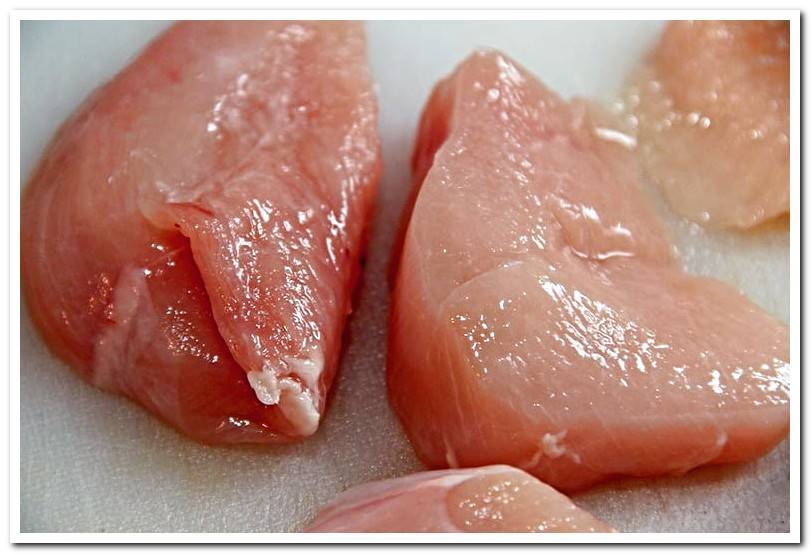
The monoproteic diet is one that will only contain one source of animal protein. It is a form of food that can offer benefits in certain situations. The most common example is food allergy.
Just like people, dogs can suffer allergies to certain foods. In your case, the main sign of this allergy will be itching and / or the appearance of rashes on your skin. And in these cases it is always advisable to follow a monoproteic exclusion diet.
Index of contents
- 1 What is a monoproteic diet?
- 2 What foods are dogs allergic to?
- 3 What is a monoproteic diet used for?
- 4 Food allergy in dogs
- 5 How does the monoproteic diet work?
- 6 Example of monoproteic diet
- 7 What is a hydrolyzed diet?
What is a monoproteic diet?
When we talk about monoproteic diet we are referring to a menu containing protein from a single source Hence the name. To make such a diet attempts are made to find proteins with a low probability of triggering food allergies.
It should be borne in mind that there are many ingredients that can provoke allergic reactions. The monoproteic diet is also characterized by being made with very few ingredients. In no case may it contain artificial colors, preservatives or flavorings.
What foods are dogs allergic to?
When preparing a monoproteic diet that works for our dog, we must take into account what foods he has consumed in his life. In this way we will look for a completely new one for him. For the choice you have to know that some ingredients cause more allergic reactions in dogs. They are the following :
- Meats in general (cow, pig, horse, ox or chicken) and fish
- Milk and eggs
- Cereals (wheat, corn)
- Potatoes
- Soy
Any food has the ability to trigger an allergic reaction.

What is a monoproteic diet used for?
The first use of this type of diet is identification and resolution of food allergies. But there are other clinical pictures where you can recommend management with this type of diet, to take advantage of its benefits. The following stand out:
- Pancreatic insufficiency.
- Inflammatory bowel disease.
- Digestive problems in which protein loss is noted.
- Malabsorption.
- Gastritis.
- Excess lipids in the blood.
Food allergy in dogs
The monoproteic diet is recommended in cases where the dog manifests a food allergy. This type of allergy is very common and affects dogs of any age. Its main sign is itching. And it is also accompanied by a skin rash characterized by the appearance of small lumps, pustules and raised skin.
The areas with these injuries are usually the ears, the feet, the back of the legs and the lower part of the body. For the allergy to occur, the dog has had to be exposed to the allergen one or more times. It is more common in dogs that have been consuming the same diet for more than two years.
To diagnose a food allergy, the veterinaryn will prescribe a monoproteic diet, which we can also call hypoallergenic. The latter name derives from the less chance that a single protein diet will cause an allergy. Also called an exclusion diet. They have greater digestibility.
- Complete information on food allergy in dogs
How does the monoproteic diet work?
As soon as the dog with food allergy begins to consume the monoproteic menu, the symptoms that it presented will gradually disappear. We will notice improvement in a matter of days, although there are dogs that take even weeks. So this type of diet must be administered for a minimum of 8-12 weeks.
This result is what allows confirming the diagnosis. As there was improvement, we could add other foods one by one. If the dog has symptoms again, we will have identified the product causing the allergy. Of course, it is crucial that, outside of the prescribed diet, the dog is given absolutely nothing.
Example of monoproteic diet
The first step to make a monoproteic diet for our dog is to write down, in the most exhaustive way possible, all the ingredients that he has consumed throughout his life. We must pay special attention to the current diet. The goal is to find those new foods entirely.
In this way we are sure that they were not the triggers of the allergy. Therefore, it is useless to change the diet to a similar one or modify it without taking into account the dog’s nutritional history. For sale we can find this type of diet, but we have the option of offering homemade food.
The proteins most chosen for the preparation of these menus are those of salmon, venison, duck or foal, depending on the history of each dog. These products can be combined with rice, peas or potatoes to offer a complete menu. Of course, amounts and composition must be supervised by the vet.
What is a hydrolyzed diet?
Monoprotein diets can be made from hydrolyzed proteins. They are useful, for example, in cases where it is impossible to obtain a list of all the ingredients consumed by the dog.
The hydrolyzed protein is the one that undergoes a hydrolysis process. Their goal is to reduce their size, since proteins are large molecules. This makes it difficult for the immune system to identify them as allergens. Hence its relevance in cases of food allergies.
